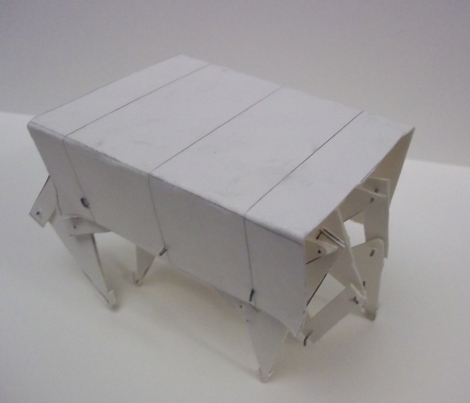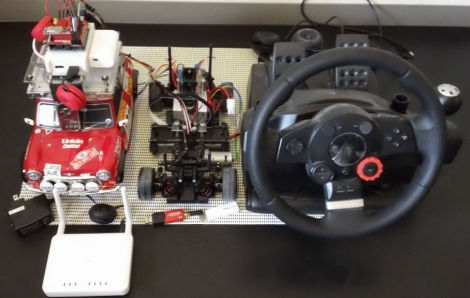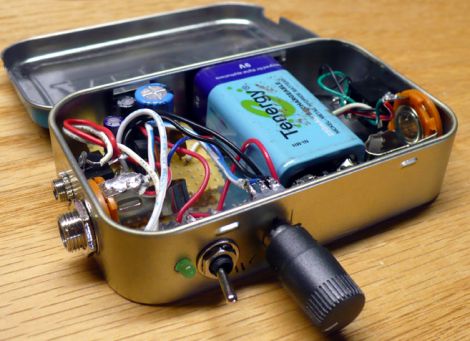Here in the Midwest it sometimes seems like Spring will never, well…spring. We get that “April showers bring May flowers”, but nearly all of the last month has been cold and rainy around these parts. While things are improving, we think it’s always good practice to have a few fun projects at the ready, just in case your plans with the kids get rained out.
We think that Hackaday reader [Dombeef’s] papercraft strandbeest is a perfect idea for a rainy afternoon. The supply list is pretty short, requiring little more than some scissors, pliers, paperclips, and glue in addition to the thick paper that makes up the body of the strandbeest. The paper is cut into pieces according to the PDF template he includes in his Instructable, secured to one another via small pieces of paperclip.
Once the legs are all constructed, a main axis is built from one of the remaining paperclips, and everything is joined together under the main portion of the strandbeest’s body.
As you can see in the video, the legs work quite well, though the strandbeest can probably benefit from a hand crank in the short term. [Dombeef] plans on adding a small motor to his creation, which should get the strandbeest moving about quite rapidly once completed.
If you are looking for more fun projects to do with the kids, look no further than this papercraft gyroscope or these squishy circuits.
Continue reading “Papercraft Strandbeest Is A Great Rainy Day Project”















